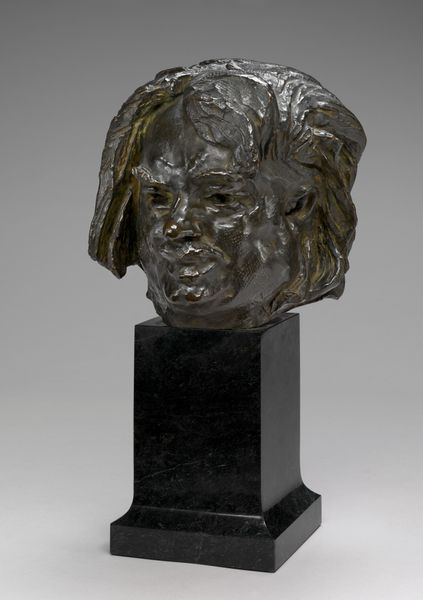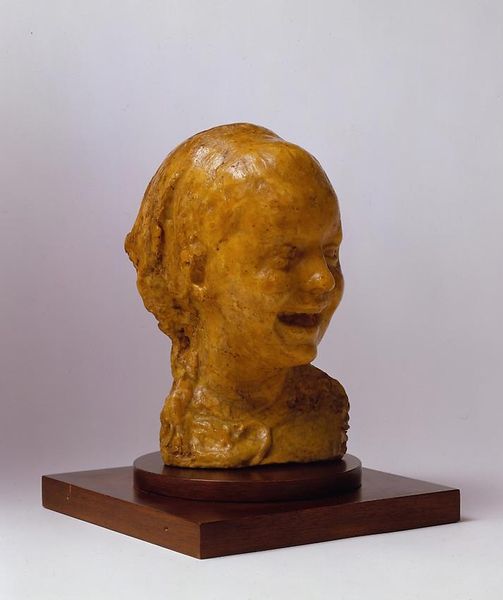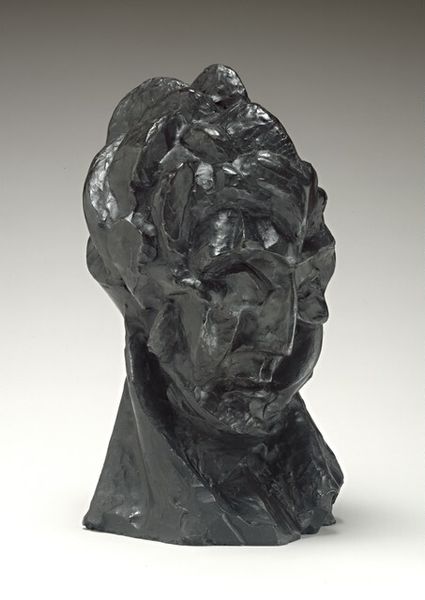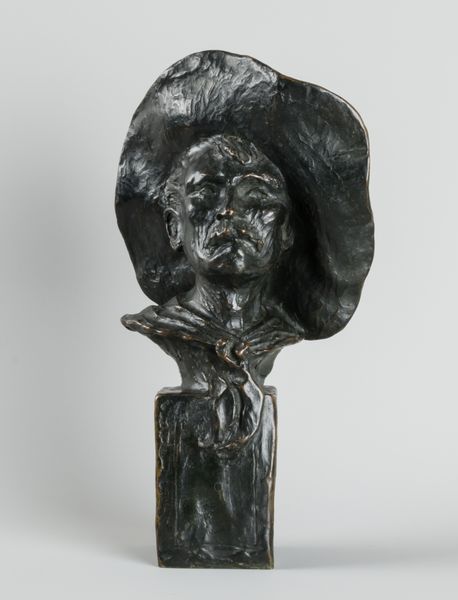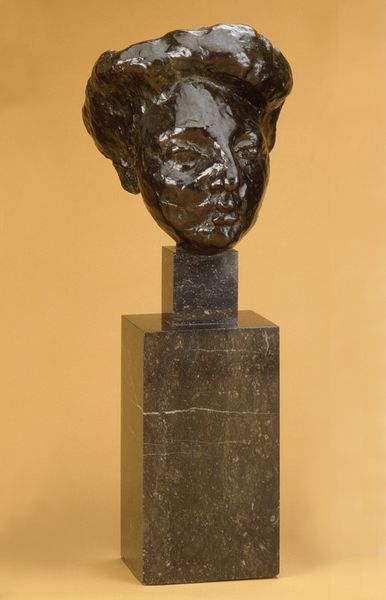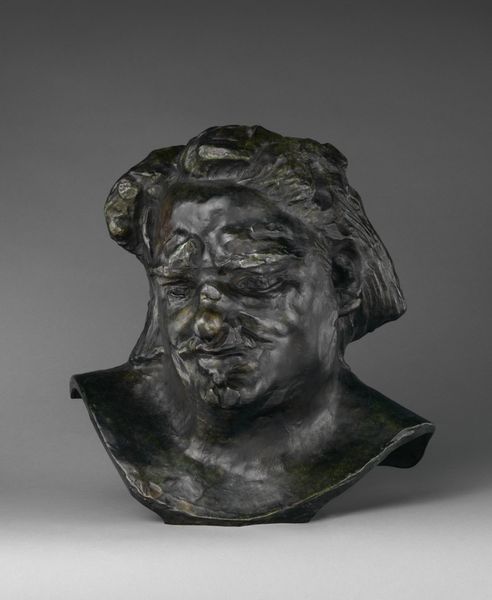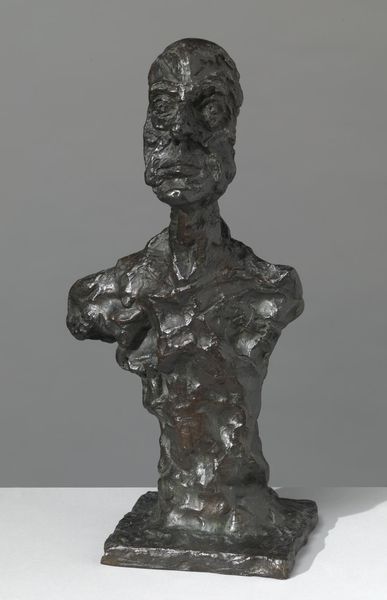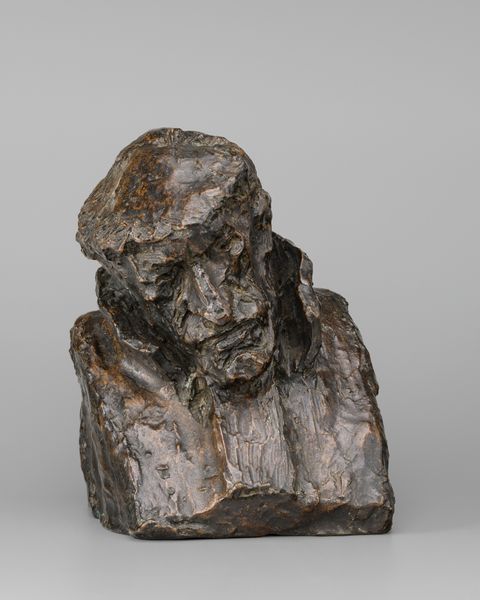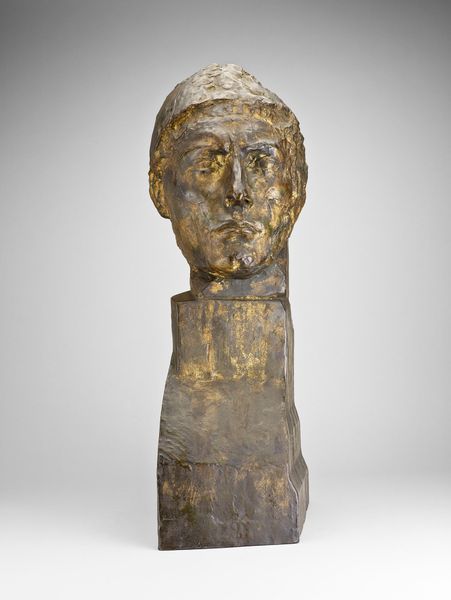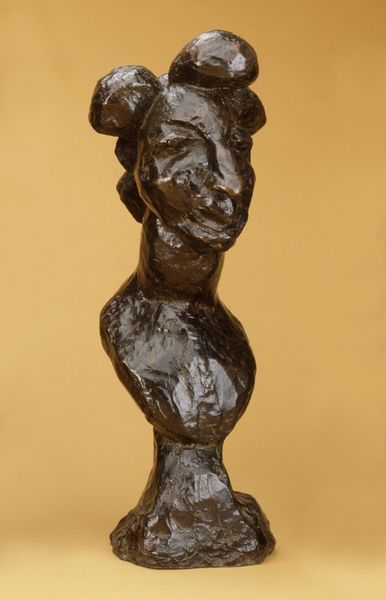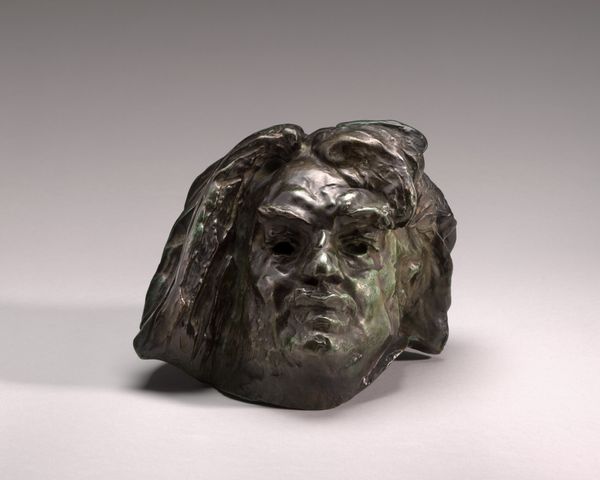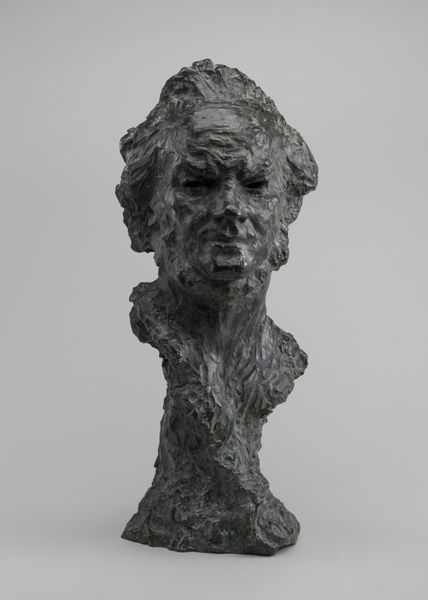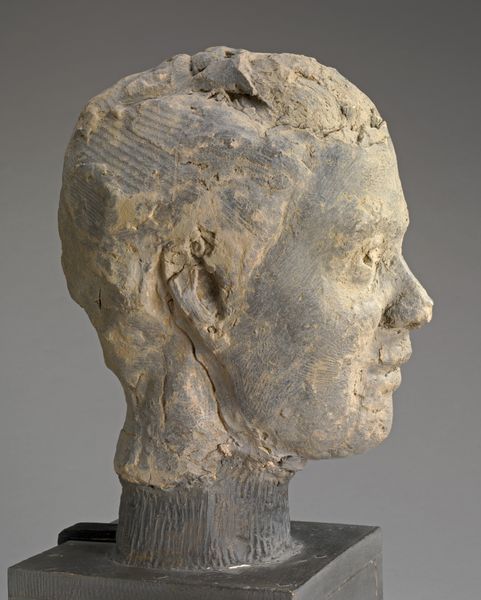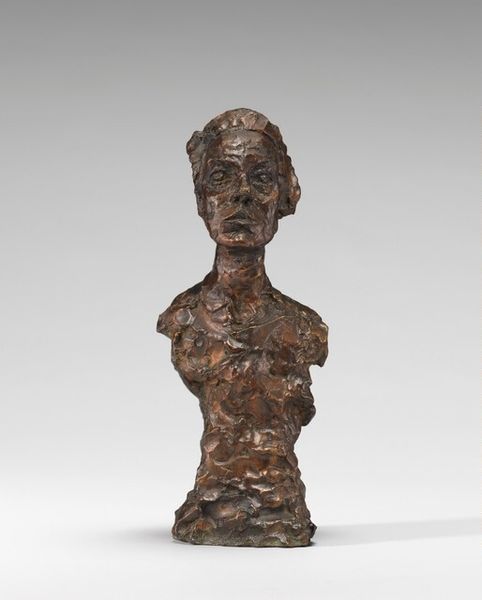
Dimensions: overall (without base): 15.5 x 11.3 x 9 cm (6 1/8 x 4 7/16 x 3 9/16 in.)
Copyright: National Gallery of Art: CC0 1.0
Curator: Bronze. It's always a surprise, isn't it? This one by Auguste Rodin, he created "Head of Hanako (Ohta Hisa)" sometime between 1908 and 1965. Bronze casts a shadow that sort of pulls you into a timeless space. What's grabbing your attention? Editor: Immediately, there's something quite serene, almost melancholic in the way Rodin has captured her expression. I’m wondering about the gaze…it seems turned inward, away from the viewer. Is it an observation on cultural representation at the time, or a reflection of Hanako’s interiority? Curator: Rodin had a penchant for exploring the human condition in extreme detail; the bare face rendered in deep furrows seems intentional. Hanako, you see, was a very celebrated dancer, one that seemed to unlock something within him... an artistic obsession. What do you make of the contrast of smoothness in the skin and the deeply carved wrinkles elsewhere? Editor: The contrast does indeed offer insight. The wrinkles could signify lived experience and a narrative depth that challenges orientalist portrayals of East Asian women, which often fell into categories of docile beauty, erotic object, or mysterious temptress. However, I wonder if, on the other hand, Rodin might be subtly exoticizing her lived reality and her performance on stage. Curator: An orientalist lens might make for compelling drama. Rodin was so fascinated with gesture and movement – like the way the muscles moved during Hanako's dancing. There's the tension he felt between a desire to realistically capture the body and this other thing bubbling inside: feeling. Do you find his portrayal respectful? Or exploitative? Editor: That's a vital point to raise. As artists, can one set aside such subjective readings, particularly if those artists benefitted and profited from portraying a woman from Japan who possibly dealt with the challenges of race and class, let alone the art-world dynamics and expectations? And do we need to explore Rodin’s power as a canonical Western artist to amplify Hanako's presence beyond just a muse? Curator: Oh, she was far from just a muse. Hanako was also incredibly independent, and perhaps used Rodin to elevate her social status as a very savvy means. I would argue that she also found value from the art he created with her likeness. Still, looking into those deep, bronze eyes... a dialogue emerges that keeps shifting as the art itself reflects. Editor: I completely concur; art and those muses, if you will, keep morphing. This has left me wrestling with how art, even art aiming for a universal statement on humanity, still necessitates us addressing both how the subject views and navigates the global reality, along with the agency they can wield even within unbalanced power dynamics.
Comments
No comments
Be the first to comment and join the conversation on the ultimate creative platform.
